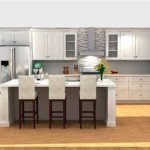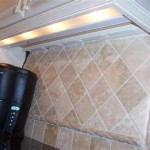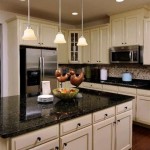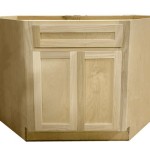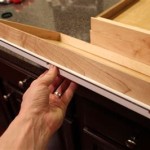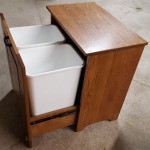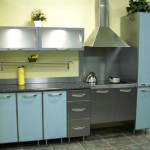Maximizing Space In Small Bathrooms With Storage Cabinets And Doors
Small bathrooms present a unique design challenge. Limited square footage necessitates creative solutions for storing essential items while maintaining a functional and aesthetically pleasing space. Strategically incorporating storage cabinets and doors is a powerful method for maximizing efficiency and creating a more comfortable bathroom environment.
The key to success lies in understanding the specific spatial constraints of the bathroom and tailoring the storage solutions accordingly. This involves careful consideration of vertical space, underutilized areas, and the overall flow of the room. Selecting the right types of cabinets and door styles can dramatically improve both storage capacity and the visual perception of size.
Leveraging Vertical Space with Tall Cabinets
One of the most effective ways to maximize storage in a small bathroom is to utilize vertical space. Tall, narrow cabinets can provide significant storage without occupying valuable floor area. These cabinets can be placed against walls, in corners, or even above the toilet (with appropriate clearances) to store towels, toiletries, and cleaning supplies.
When selecting tall cabinets, consider the depth. A shallower cabinet (around 12-15 inches deep) is often preferable in a small bathroom to prevent it from feeling too imposing. The interior shelving should be adjustable to accommodate items of varying sizes. Glass shelves can also create a sense of openness, contributing to the illusion of more space.
The style of the cabinet doors should complement the overall bathroom design. Shaker-style doors offer a classic and versatile look, while slab doors provide a more contemporary aesthetic. Mirrored doors can serve a dual purpose, providing storage and a reflective surface to enhance the perceived size of the room.
Installing a tall linen cabinet near the shower or bath can provide convenient access to towels and bath products. Ensure that the cabinet is constructed of moisture-resistant materials, such as painted MDF or solid wood with a durable finish, to withstand the humid bathroom environment. Consider adding ventilation holes or slats to prevent moisture buildup inside the cabinet.
Optimizing Under-Sink Storage
The space beneath the bathroom sink is often underutilized. Installing a vanity cabinet specifically designed for under-sink storage can significantly improve organization and declutter the countertop. These cabinets typically feature cutouts or U-shaped drawers to accommodate the plumbing.
When choosing an under-sink cabinet, consider the size and shape of the sink. A pedestal sink offers minimal storage, but a vanity cabinet can be installed around it to create a more functional space. Wall-mounted vanities can also create the illusion of more floor space, making the bathroom feel larger.
Inside the under-sink cabinet, utilize organizers such as pull-out shelves, drawer dividers, and door-mounted baskets to maximize storage efficiency. These organizers can help to keep toiletries, cleaning supplies, and other items neatly arranged and easily accessible. Consider using clear plastic containers to store smaller items and prevent spills.
The cabinet doors are a crucial element of under-sink storage. Hinged doors are a common option, but drawers can provide easier access to items at the back of the cabinet. A combination of doors and drawers can offer the best of both worlds, providing storage for both larger and smaller items. Ensure that the doors and drawers operate smoothly and quietly to avoid disturbing others.
Consider adding a toe-kick drawer at the base of the vanity. This shallow drawer can be used to store small items such as sponges, scrub brushes, or even a small step stool for children to reach the sink.
Selecting Space-Saving Door Styles
The type of doors used on cabinets and in the bathroom itself can significantly impact the available space. Traditional swing doors require clearance to open and close, which can be problematic in a small bathroom. Space-saving door styles, such as sliding doors, bifold doors, and pocket doors, can help to alleviate this issue.
Sliding doors, also known as barn doors, slide along a track mounted to the wall. They do not require any swing space, making them ideal for small bathrooms or tight spaces. Sliding doors can be used for cabinets, closets, or even as a bathroom door. However, they do require sufficient wall space for the door to slide open completely.
Bifold doors consist of two or more panels that fold together when opened. They require less swing space than traditional doors, making them a good option for closets or small cabinets. Bifold doors can be made from a variety of materials, including wood, glass, and metal. Consider using mirrored bifold doors to create the illusion of more space.
Pocket doors slide into a recess in the wall, completely disappearing when opened. They are the most space-saving door option, as they require no swing space or wall space. Pocket doors require more extensive installation than sliding or bifold doors, as the wall must be structurally modified to accommodate the door. However, the space-saving benefits can be well worth the investment.
For cabinet doors, consider using lift-up doors or tambour doors. Lift-up doors swing upwards, providing easy access to the contents of the cabinet. Tambour doors roll up and out of the way, similar to a roll-top desk. These door styles can be particularly useful for frequently accessed cabinets, such as those used to store toothbrushes, razors, or makeup.
Regardless of the door style chosen, ensure that the hardware is durable and easy to operate. Knobs and pulls should be appropriately sized and positioned for comfortable use. Consider using soft-close hinges and drawer slides to prevent slamming and reduce noise.
Maximizing Over-the-Toilet Storage
The space above the toilet is often overlooked as a potential storage area. Over-the-toilet storage units can provide valuable space for storing towels, toilet paper, and other bathroom essentials. These units typically consist of a shelving unit or cabinet that fits snugly over the toilet.
When choosing an over-the-toilet storage unit, ensure that it is compatible with the toilet's dimensions and the height of the ceiling. The unit should be stable and secure to prevent it from tipping over. Consider using a unit with adjustable shelves to accommodate items of varying sizes.
Over-the-toilet storage units come in a variety of styles, from open shelving units to enclosed cabinets. Open shelving units provide easy access to items, while enclosed cabinets offer more privacy and protection from dust and moisture. Consider using decorative baskets or bins to organize items on open shelves.
Another option for over-the-toilet storage is to install a wall-mounted cabinet above the toilet. This can provide a more custom and integrated look. Ensure that the cabinet is securely mounted to the wall and that it is positioned at a comfortable height. Consider using a cabinet with mirrored doors to provide a reflective surface and enhance the perceived size of the room.
Avoid overloading the over-the-toilet storage unit with heavy items, as this can compromise its stability. Instead, use it to store lightweight items such as towels, toilet paper, and decorative accessories.
Utilizing Wall-Mounted Cabinets and Shelves
Wall-mounted cabinets and shelves can provide valuable storage without taking up any floor space. These units can be installed in a variety of locations, such as above the sink, next to the mirror, or even in the shower. Wall-mounted cabinets and shelves can be used to store toiletries, makeup, and other bathroom essentials.
When choosing wall-mounted cabinets and shelves, consider the weight that they will be required to support. Ensure that the units are securely mounted to the wall using appropriate hardware. Consider using heavy-duty anchors for drywall or concrete walls.
Wall-mounted cabinets can be open or enclosed. Open cabinets provide easy access to items, while enclosed cabinets offer more privacy and protection from dust and moisture. Consider using a combination of open and enclosed cabinets to create a visually interesting and functional storage solution.
Shelves can be made from a variety of materials, including wood, glass, and metal. Glass shelves can create a sense of openness, while wooden shelves offer a more traditional look. Metal shelves are durable and easy to clean, making them a good option for the shower.
Consider installing a floating shelf above the toilet or next to the mirror. Floating shelves are supported by hidden brackets, creating a clean and minimalist look. These shelves can be used to display decorative items or to store small toiletries.
Incorporating Mirror Cabinets
Mirror cabinets offer a dual-purpose solution for small bathrooms, providing both a mirror and storage space. These cabinets typically feature a mirrored door that opens to reveal shelving inside. Mirror cabinets can be installed above the sink or on any wall in the bathroom.
When choosing a mirror cabinet, consider the size and style of the mirror. The mirror should be large enough to provide a clear reflection, but not so large that it overwhelms the space. The style of the mirror should complement the overall bathroom design.
The interior shelving should be adjustable to accommodate items of varying sizes. Consider using glass shelves to create a sense of openness and to allow light to penetrate the cabinet. The cabinet should be constructed of moisture-resistant materials to withstand the humid bathroom environment.
Mirror cabinets can be recessed into the wall or surface-mounted. Recessed cabinets offer a more seamless and integrated look, while surface-mounted cabinets are easier to install. Consider using a cabinet with a built-in light to provide additional illumination.
Mirror cabinets are ideal for storing small toiletries, makeup, and medications. They can help to keep the countertop clear and organized, creating a more spacious and functional bathroom.

Extra Storage In The Bathroom Maximizing Space Small And Humid Areas Soss Door Hardware
21 Small Bathroom Storage Ideas That Really Work

Built Ins Boost Storage In Small Bathrooms

Bathroom Storage Design Ideas Maximize Your Space With Style Decorilla Interior
21 Small Bathroom Storage Ideas That Really Work

5 Ways To Maximize Space In Your Small Bathroom Shiftmodernhome Com

Bathroom Storage Design Ideas Maximize Your Space With Style Decorilla Interior

9 Design Tips To Maximise A Small Bathroom Space Saving S

15 Small Bathroom Vanity Ideas That Rock Style And Storage

Small Bathroom Design Ideas Maximizing Space Functionality
Related Posts

